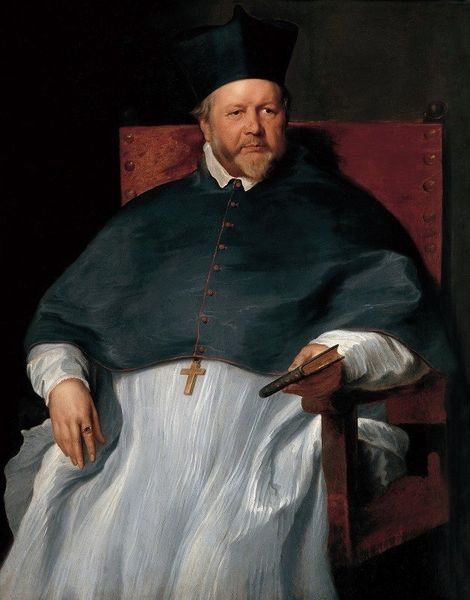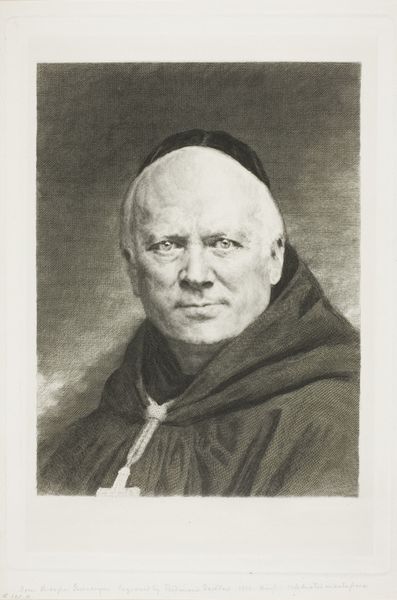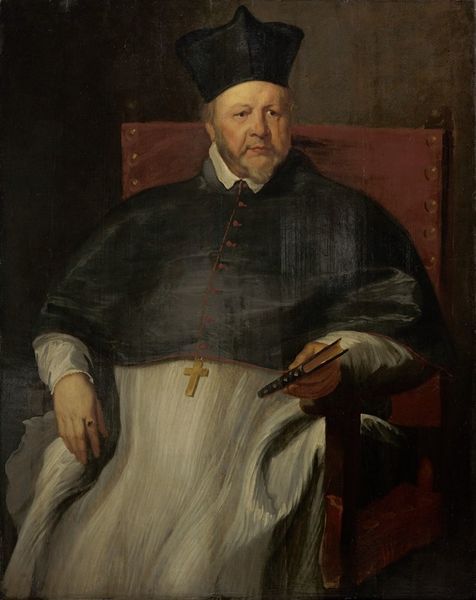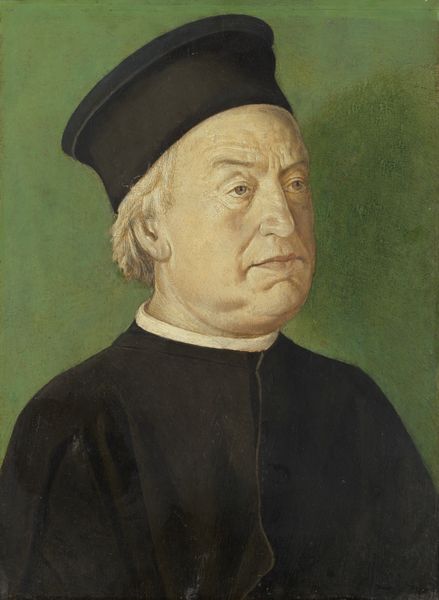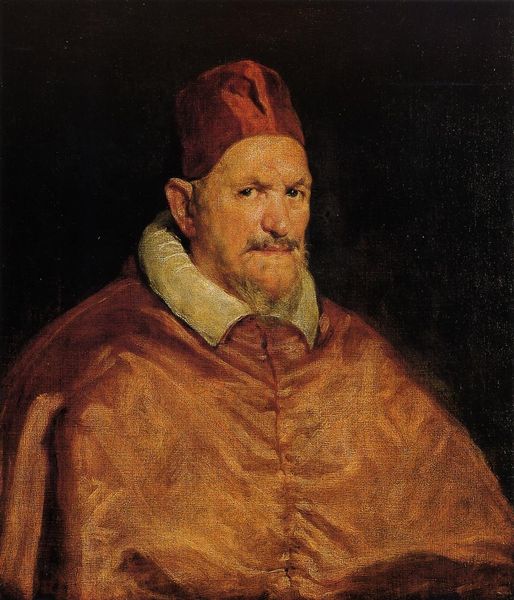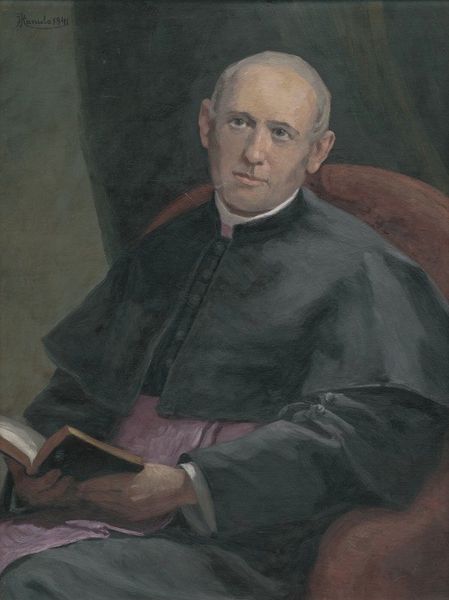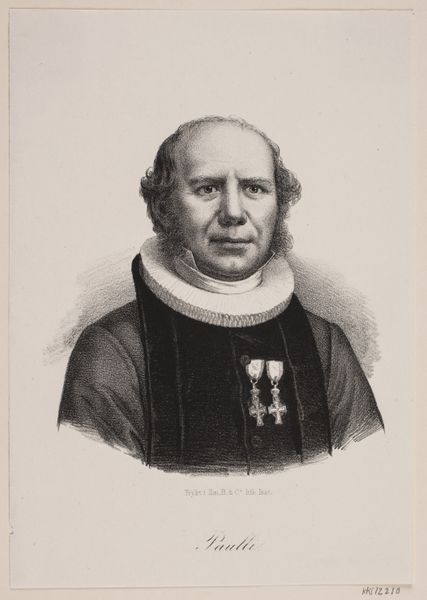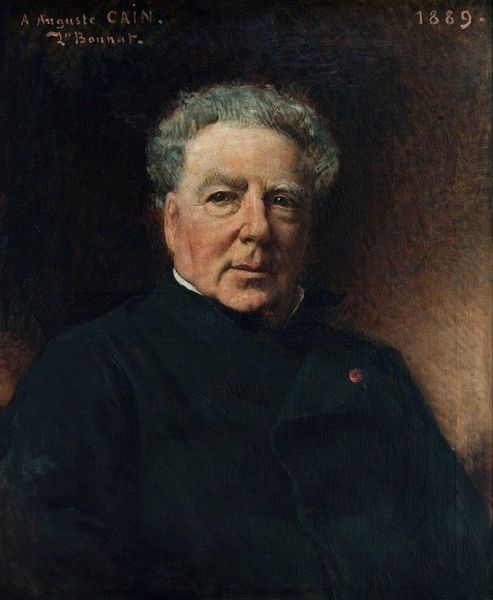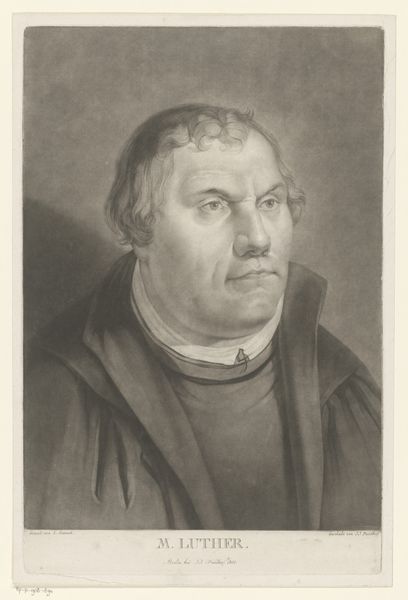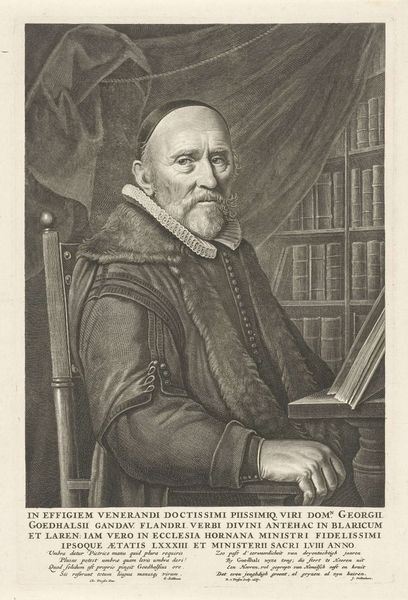
painting, oil-paint
#
portrait
#
figurative
#
portrait
#
painting
#
oil-paint
#
figuration
#
portrait reference
#
portrait head and shoulder
#
romanticism
#
animal drawing portrait
#
portrait drawing
#
facial study
#
facial portrait
#
portrait art
#
fine art portrait
#
realism
#
digital portrait
Copyright: Public Domain: Artvee
Curator: This oil-on-canvas portrait, simply titled "Joseph Kaltenthaler," was completed in 1833 by the Austrian painter Friedrich von Amerling. It offers a fascinating glimpse into the world of 19th-century portraiture. Editor: You know, the first thing that hits me is this incredible stillness. There's a weight to his gaze, almost like he knows secrets, but he's keeping them locked away for now. A bit like that one relative we've all got...or is that just me? Curator: That sense of knowing likely speaks to Amerling’s deft use of Realism and Romanticism, blending an objective representation of the figure with a sensitivity towards their inner life. Kaltenthaler was a real person, likely of some societal standing to commission such a work. Editor: Right. I notice the red cap, too. There's such a direct contrast between that burst of color and the darker, more subdued tones of his jacket and the background. Intentional? Or simply of his status and personal taste, do you think? Curator: Most definitely intentional. That cap draws the eye, creating a focal point and likely symbolising a position of importance or affiliation, drawing our attention to issues of identity, community, and representation. Also, think of what its existence communicates to the sitter. Editor: It's striking. The texture Amerling coaxes from the oil paint gives a certain solidity and humanity. His face almost seems to breathe! I find myself wondering what Joseph thought about it… or if he was happy to be perceived as an icon within such structures and affiliations. Curator: Amerling was adept at capturing likeness while simultaneously conveying character. We must consider this work not just as a faithful representation but as a constructed image, intended to project specific ideas about Kaltenthaler's identity, social role, and perhaps his personal aspirations. The gaze of the subject, often directed away, speaks of the internal conflicts and private dramas playing out. Editor: Absolutely! This work feels more like an invitation to imagine a narrative. You see the red cap; I see a flicker of mischief. It reminds me that art isn't about facts but rather about our own interpretation of life in all its absurdity and brilliance. Thank you, Joseph, for giving us a space to meet each other.
Comments
No comments
Be the first to comment and join the conversation on the ultimate creative platform.
